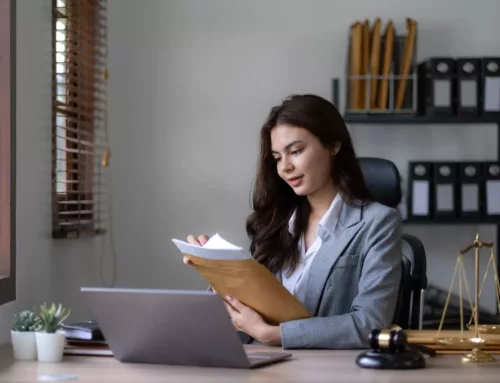Who Bears Responsibility in a Self-Driving Car Accident?
When you hear “self-driving car,” you probably think of Elon Musk’s Tesla. Self-driving cars are becoming commonplace on our roadways. They promise safer rides, fewer accidents, and a futuristic touch to our commutes. What happens when a self-driving car crashes? Indiana self-driving car accident fault: who’s responsible? We’ll investigate this subject and our state’s self-driving car accident laws.
First, you must define a self-driving car to understand Indiana self-driving car accidents. Self-driving cars, often called autonomous vehicles, can drive without human input. These vehicles analyze their surroundings and make real-time road judgments using sensors, cameras, and sophisticated algorithms. Understanding the foundations of self-driving cars helps you grasp Indiana’s particular obstacles in identifying who’s at fault in a self-driving car accident. They offer improved safety and convenience.
Quick Summary:
- Introduction to Self-Driving Cars:
-
- Self-driving cars, or autonomous vehicles, can navigate without a human driver using advanced technology.
- Technology includes sensors, cameras, and computer systems for decision-making.
- Features of Self-Driving Cars:
-
- Key features include sensors (cameras, radar, lidar), artificial intelligence for decision-making, detailed mapping, and various automation levels.
- Adaptive cruise control, lane-keeping assistance, collision avoidance systems, and remote control are standard safety features.
- Government Regulation:
-
- The Department of Transportation (DOT) provides guidelines, emphasizing safety, mapping, decision-making, and cybersecurity.
- Current regulations are suggestions rather than strict laws, with the possibility of future congressional rules.
- Injuries in Self-Driving Car Accidents:
-
- Injuries from self-driving car accidents may include whiplash, bruises, broken bones, head injuries, internal injuries, and emotional distress.
- Despite safety features, accidents can still occur, necessitating awareness of potential injuries.
- Fault in Self-Driving Car Accidents in Indiana:
-
- Liability involves the driver, car manufacturer, defective component makers, distributors, software developers, and repair shops.
- Proving fault requires detailed evidence, and seeking legal help is essential for a strong case.
- Rate of Self-Driving Accidents in the US:
-
- In the first four months of 2022, self-driving cars were involved in at least 11 fatal accidents in the US.
- On average, there were approximately 9.1 crashes per million miles traveled by autonomous vehicles.
- Steps After a Self-Driving Car Accident:
-
- Ensure safety, move to a safe location, and contact emergency services.
- Exchange information, document the scene, identify witnesses, and involve law enforcement.
- Inform your insurance company, preserve evidence, seek legal advice, and keep track of related expenses.
What Are Self-Driving Cars?
Self-driving or autonomous cars can drive without a driver. Imagine an automobile that can turn at junctions, change lanes, and stop at traffic lights without a driver.
Advanced sensors, cameras, and computer systems help these autos “see” and understand their surroundings. These eyes and brains help the car navigate the road, other cars, pedestrians, and objects safely.
Computer-programmed rules guide self-driving autos. These instructions instruct the car’s behavior. A red light tells the car to halt, while a green light lets it drive.
In the event of a self-driving car collision, legal issues arise. Who’s accountable? The car owner, the technology company, or the programmer? This is hard, therefore lawmakers are creating legislation to clarify everyone’s rights and obligations with smart-driving friends.
What are the Features of a Self-Driving Car?
Autonomous automobiles use innovative technologies to drive without human interference. Levels of automation, from Level 0 (no automation) to Level 5 (complete automation), affect self-driving car features. These are standard self-driving automobile features:
Sensors
- Self-driving cars use special sensors like cameras, radar, and lidar.
- Cameras work like your eyes, seeing what’s around the car.
- Radar sends radio waves to detect objects, much like how bats use sound.
- Lidar uses lasers to measure distances and create a detailed 3D map.
Artificial Intelligence (AI)
- Think of the car’s brain as a super-smart computer.
- It uses AI to understand what’s happening around it.
- The more the car drives, the smarter it gets at making decisions.
Mapping
- Self-driving cars have detailed maps to know where they are.
- These maps include information like road signs, speed limits, and the locations of other vehicles.
Decision-Making
- The car decides what to do based on the information it gets from sensors and maps.
- It can decide when to speed up, slow down, or change lanes.
Automation Levels
- Self-driving cars have different levels of automation.
- Some still need a driver to take over in certain situations (like bad weather), while others can handle everything on their own.
Adaptive Cruise Control
- This feature keeps the car at a constant speed and adjusts it based on the traffic around.
- It’s like cruise control, but smarter.
Lane Keeping Assistance
- The car helps stay in the correct lane by gently steering.
- It’s like having a friend remind you to stay in your lane while driving.
Collision Avoidance Systems
- These systems help the car avoid accidents.
- They can brake or steer away from obstacles.
Remote Control
- Some self-driving cars can be controlled remotely.
- It’s like playing with a toy car using a remote control but for real cars!
Together, these features make driving safer and easier. Despite these safety features, self-driving cars can still crash.
Is There A Government Regulation on Self-Driving Cars?
New self-driving car rules are being written as technology progresses. The DOT issued its first self-driving car rules. Since these regulations weren’t mandatory, some considered they were too lax. The present administration has relaxed these rules.
The guidelines advise self-driving car manufacturers to consider safety, where they can drive, how they detect things, what happens if something goes wrong, how people interact with the cars, and data security. However, firms are not required to adopt this advice.
- Safety: Design choices should prioritize safety in every way.
- Where they can drive: Self-driving cars should define and document where they can drive, like types of roads, areas, speeds, and weather conditions.
- Spotting things and reacting: Cars should be good at handling different situations and obstacles.
- Backup plan: There should be a clear plan in case the self-driving system fails.
- Dealing with people: Potential problems with how people interact with the car should be expected and fixed.
- Cybersecurity: Since self-driving cars collect a lot of data, it’s important to protect it and the driver’s privacy.
- Safety in crashes: Companies should think about how well the car can protect people in a crash.
- Recording data: It’s suggested that self-driving cars should be able to record data so we can figure out why a crash happened.
- Teaching buyers: People who buy self-driving cars should be taught about what the car can do, what to do if it fails, and any potential issues before they start driving.
Note that these DOT requirements aren’t mandatory for companies. Although we hope firms make self-driving cars safe, the government isn’t forcing them. Congress may subsequently pass laws to protect everyone.
What Kind of Injuries Can Occur In Self-Driving Car Accidents?
Self-driving car accidents can result in various types of injuries, just like accidents involving human-driven vehicles. Here are some common injuries that can occur:
- Whiplash: This is when the head suddenly jerks forward and then backward, often causing neck strain. It’s like when you quickly nod your head up and down.
- Bruises and Cuts: In a collision, people can get bruises and cuts from hitting parts of the car or being hit by objects inside the vehicle.
- Broken Bones: The impact of a crash can be strong enough to break bones, especially if the person is thrown against hard surfaces inside the car.
- Head Injuries: If the head hits the steering wheel, dashboard, or windows, it can lead to head injuries, ranging from mild concussions to more severe trauma.
- Internal Injuries: Even though you might not see them, accidents can cause injuries to organs inside the body. This is why it’s crucial to get checked by a doctor after a crash.
- Emotional Distress: Car accidents, whether with self-driving cars or traditional ones, can be traumatic. Emotional distress, like anxiety or stress, can also be an outcome.
Remember that self-driving cars reduce accidents by reducing human error. Accidents can still happen, so be alert for potential injuries. Prioritize safety and follow self-driving car system instructions.
Who’s At Fault For A Self-Driving Car Accident In Indiana?
The law is continuously changing in Indiana, making self-driving car accident liability difficult to determine. Let’s simplify the parties and their potential liabilities:
Driver of the Autonomous Car
- The driver of a self-driving car is still responsible, even though the car has autonomous features.
- Car companies like Tesla and Google emphasize that the driver must supervise the car at all times.
- If a crash occurs, the driver can be held liable, and the injured party can seek legal help.
Car Manufacturer
- Manufacturers are responsible for making sure the car works properly and meets safety standards.
- If a crash happens due to a defect in the car, the manufacturer can be held responsible.
- The injured party needs to prove the defect caused the crash, and a car accident law firm can help.
Defective Vehicle Component Manufacturer
- Companies making car components (like brakes) can be liable if their parts are defective.
- The injured party must prove the part was faulty and caused the crash.
- A car accident lawyer can help prove the component manufacturer’s liability.
Companies in the Car’s Chain of Distribution
- Entities involved in selling and delivering cars can be responsible for damages during transportation.
- The injured party must show negligence or mishandling during transport caused by the crash.
- A skilled car accident attorney can help gather evidence to prove the transporter’s fault.
Vehicle Software Development and Implementation Company
- Software is crucial for self-driving cars, and the software development company is responsible for its proper functioning.
- If a crash results from a software problem, the software company can be held liable.
- The injured party must determine if the software was bought from a third party, and a car accident lawyer can help prove software-related faults.
Third-Party Vehicle Repair Shop
- Repair shops can be liable if a crash occurs due to a defective part or improper repair.
- Proving negligence is essential, and the injured party should seek assistance from car accident lawyers.
- Lawyers will investigate and present evidence to establish the repair shop’s responsibility.
Drivers, automobile manufacturers, component producers, distributors, software developers, and repair shops are all involved in Indiana self-driving car accidents. Presenting a compelling case based on facts in diverse instances requires legal support from a qualified car accident attorney.
What is the Rate of Self-Driving Accidents in the US?
The National Highway Traffic Safety Administration reported 11 fatal accidents involving self-driving cars in the first four months of 2022. Driverless automobiles had 9.1 crashes per million miles on average.
What do I do if I’m involved in a self-driving car accident?
If you’re involved in a self-driving car accident, it’s essential to take certain steps to ensure your safety, gather relevant information, and navigate the aftermath appropriately. Here’s a guide on what to do:
Ensure Safety
- Check for injuries: First and foremost, ensure that everyone involved is safe. Check for injuries and seek medical attention if needed.
- Move to a safe location: If the accident is minor and the vehicles are drivable, move them to the side of the road to avoid blocking traffic and reduce the risk of additional collisions.
Contact Emergency Services
- Call 911 or the emergency services number in your area to report the accident and request medical assistance if necessary.
Exchange Information
- Exchange information with the other parties involved, including names, contact details, insurance information, and vehicle details.
Document the Scene
- Take pictures: Use your smartphone or camera to document the scene, including the vehicles, their positions, any damage, and relevant road conditions.
- Note details: Record details about the accident, such as the date, time, location, and any other relevant observations.
Identify Witnesses
- If there are any witnesses to the accident, obtain their contact information. Their statements may be valuable in the investigation.
Contact Law Enforcement
Even if the accident is minor, it’s advisable to contact law enforcement and file a report. This documentation can be necessary for insurance claims and legal purposes.
Inform Your Insurance Company
- Notify your insurance company as soon as possible. Provide them with accurate and detailed information about the accident.
Preserve Evidence
- If possible, preserve any evidence related to the accident. This may include keeping a record of any conversations with the other parties involved or with witnesses.
Seek Legal Advice
- If you believe the self-driving technology may have played a role in the accident, consult with an attorney experienced in personal injury or traffic law. They can help you understand your rights and options.
Follow Up
- Keep track of any medical treatment, repairs, or other expenses related to the accident. This information will be helpful when dealing with insurance claims or legal proceedings.
Remember that laws and procedures differ by jurisdiction, therefore you must learn your local laws. Self-driving car accident defects in Indiana may include more complex legal difficulties, so consult a reputable auto accident attorney.
Drive Towards Justice: Discover Who’s Liable in a Self-Driving Car Accident Fault in Indiana.
Responsibility for self-driving car accidents becomes more complicated as technology advances. Who is responsible for autonomous car accidents? How do you calculate Indiana self-driving vehicle accident culpability liability? Manufacturer of cars? Software developer? or car owner? Wilson & Kinsman LLC can help us identify the main criteria that determine Indiana’s self-driving vehicle accident fault.
Wilson & Kinsman LLC, led by experienced attorneys Tom Wilson and Eric Kinsman, understand self-driving automobile accident legal issues. Our experienced staff can help you navigate Indiana’s complex laws and liability issues. Our skilled car accident lawyers can help accident victims and defendants.
To find out who is accountable for an Indiana self-driving car accident? Contact Wilson & Kinsman LLC now. Our dedicated team will help you manage the legal complexity of fault determination. Contact our experienced vehicle accident attorney at Wilson & Kinsman LLC to clarify your situation.
Let us direct you to the answers you need. Contact us now to help win your case!
Share This Story, Choose Your Platform!
Give us a call!
Testimonials
Read what our former clients have to say:






